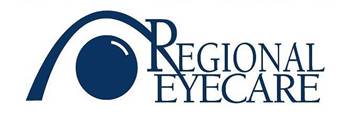Keeping Your Child’s Eyes and Vision Healthy
About 80% of classroom learning relies on vision, which means children with visual difficulties are more likely to struggle with learning than those without. This is also true for infants, who need healthy vision to explore and learn about the world. Regular comprehensive eye exams are important to ensure that your child’s vision is developing as it should.
The American Optometric Association (AOA) recommends that children undergo their first eye exam at 6 months. After that, children should go for a comprehensive eye exam at age 3, when they start school, and then at least every two years thereafter.
However, if a child has a vision problem or is at risk for one, then they’ll need to see an eye doctor more frequently. This can be due to factors such as developmental delays, premature birth, crossed or lazy eyes, a family history of eye problems or previous eye injuries.
Additionally, children who already wear eyeglasses or contact lenses need annual eye exams.
Eye Exams in Infants: Birth – 24 Months
During the first few months of life, a baby’s visual system undergoes gradual development. They first learn how to focus their eyes, move them correctly, and use them together.
The brain also learns how to process visual information so they can interpret and interact with the world around them. This early stage of eyesight development also lays the foundation for motor development milestones such as crawling, walking, and hand-eye coordination.
Keeping track of your baby’s progress and booking a comprehensive infant eye exam at six months is key to ensuring that your little one is on track for healthy vision development. The eye doctor will also check for vision conditions such as strabismus (misalignment of the eyes), farsightedness, nearsightedness, and astigmatism.
Eye Exams in Preschool Children: 2-5
The toddler and preschool years are a critical period of growth for children. Children experience significant growth in intellectual and motor skills, hand-eye coordination, and perception. This helps children read and write, play sports, and engage in creative activities such as drawing, sculpting, or building. All of these need good vision and visual processes.
Amblyopia (lazy eye) and strabismus (crossed eyes) need to be looked out for because early treatment significantly improves success rates.
If your child finds it difficult to recognize objects, numbers, letters, and colors, they need to see an eye doctor. Other signs of visual problems include coordination issues, frequent squinting, eye rubbing, sitting too close to the TV, and avoiding visual activities such as puzzles or coloring.
Eye Exams in School-Aged Children: Ages 6-18
Children and teenagers with undetected or uncorrected vision problems often have difficulties in their academic, social, athletic, and personal lives.
Proper development of skills such as writing, fine/gross motor skills, and reading depends on good vision and the ability of the eyes to work together. Children who experience problems with focusing, reading, eye teaming, or hand-eye coordination, may feel frustrated and exhibit behavioral issues. Most times, they aren’t able to recognize the issue or communicate their need for help.
Common signs of vision problems in older children include having a short attention span, headaches, frequent blinking, avoidance of reading, tilting their head to one side, losing their place frequently while reading, double vision, and poor reading comprehension.
The Eye Exam
In addition to evaluating basic visual acuity, an eye exam also assesses visual skills that are necessary for learning and mobility, such as:
- Binocular vision (how the eyes work together)
- Focusing
- Peripheral vision
- Color vision
- Hand-eye coordination
- Eye tracking
Our optometrists will also examine the area surrounding the eye and inside of the eye for any eye diseases or health conditions.
Informing the eye doctor of any relevant personal health history is key because an eye exam is an opportunity to address any concerns or issues that may suggest a vision problem.
If a vision problem is detected, the eye doctor may suggest various treatment options, such as eyeglasses or contact lenses, an eye patch, vision therapy, or additional myopia management treatments.
Diagnosing and treating any eye and vision problems as early as possible is essential because certain conditions are easier to manage when caught early.
